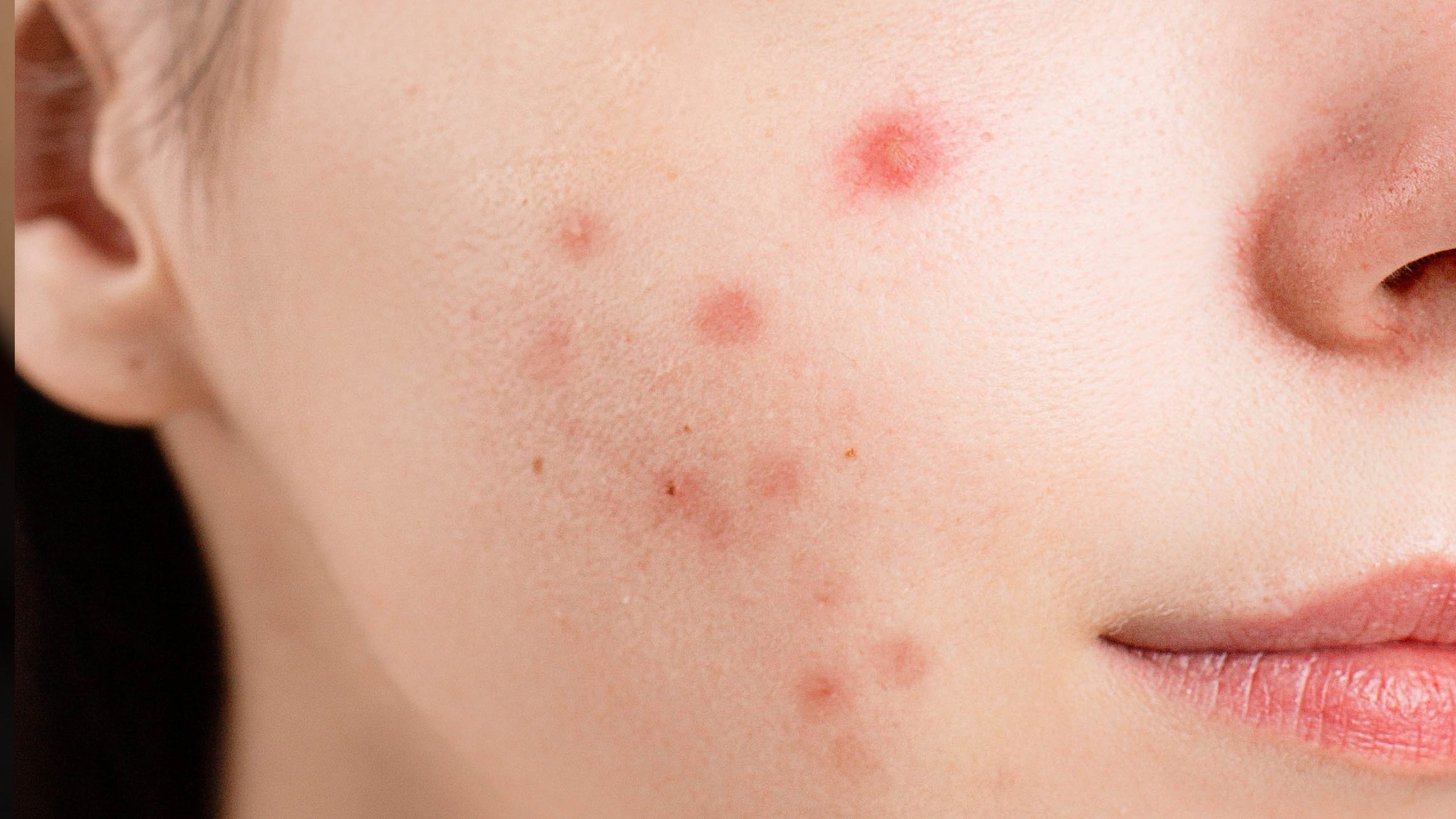If you deal with acne, you know it goes far beyond the occasional pesky pimple. No matter whether you have acne vulgaris or cystic acne, breakouts can leave your skin bumpy, irritated, painful, and red.
When an especially red bump shows up, you may be wondering how to reduce the discoloration quickly. Here’s why some pimples get so red—and what you can do about it.
Acne Redness: Why Is My Pimple So Red?
Redness is one of the ways your skin signals that it’s irritated and inflamed. In inflammatory skin conditions like rosacea, redness is widespread across the face. In acne, however, redness is limited to the immediate area surrounding pimples.
Pimples can appear red because the skin is inflamed. Inflammation plays a major role in acne: bacterial imbalances in the skin microbiome can disrupt oil production and create an inflammatory response.
In many cases, extreme redness is caused by picking at or attempting to pop the pimple. Picking can damage the skin around the pimple, which can leave red, irritated marks and even scarring at the site of the blemish.
Infection can also cause redness around your breakout. When a spot becomes infected with bacteria, it will become even more inflamed and get tender or painful.
How to Reduce Pimple Redness
So, what can you do to minimize pimple redness? Soothing redness comes down to reducing inflammation. You can do this through the use of gentle products and skincare practices.
Resist trying all the acne-fighting products you can get your hands on. You run the risk of aggravating your skin even more and possibly worsening your acne. Instead, minimize inflammation and keep your skin as balanced and healthy as possible while applying targeted treatments to reduce redness as your acne heals.
You can reduce pimple redness by:
Avoiding Touching Your Acne
Touching and picking at your blemishes can spread bacteria and increase inflammation. While the temptation to pick your acne can be high, avoid it as much as possible. If you feel an extraction is necessary, visit a board-certified dermatologist who can help remove build-up in a sterile environment with a professional technique.
Applying a Cool Compress
Icing or applying a cool compress to your pimple will help alleviate some of the swelling and redness at the same time. Apply a cloth-covered ice cube directly to your pimple for up to 10 minutes. Or, soak a clean washcloth in cool water, wring out the excess, and apply to your blemish.
Gently Cleansing
Cleansing your skin in the morning and night will help keep bacteria, excess oil, and dead skin cells from worsening your acne symptoms. Opt for a gentle cleanser that’s non-comedogenic, fragrance-free, and maintains the integrity of your skin barrier and microbiome.
Wearing Sunscreen
Wearing SPF protects the skin from sun damage, which will help expedite the healing of your blemishes and reduce ongoing redness. Opt for a gentle, non-comedogenic sunscreen.
Using Niacinamide
Niacinamide is a water-soluble form of vitamin B3. Research shows that it can help reduce acne-related redness and inflammation. It may also help to regulate oil production to help prevent future breakouts. You can find niacinamide in creams or serums to add to your skincare routine.
Trying Salicylic Acid
A topical salicylic acid treatment with a low concentration, between 0.5 and 5%, can help reduce acne redness. Salicylic acid is a peeling agent that also has some anti-inflammatory and anti-redness properties. Keep in mind that while salicylic acid can have benefits, some people experience skin irritation when using salicylic acid, which can lead to greater redness. While salicylic acid may be an effective way to jumpstart healing your acne redness, it's always a good idea to patch test first.
Balancing Your Microbiome
Your skin microbiome is your body’s first line of defense against foreign invaders, including bacteria that could trigger acne. By bringing balance to your skin microbiome, you help to reduce the appearance of blemishes by strengthening that natural protective barrier and reducing inflammation.
Gladskin’s cleansing bar is carefully formulated with only the ingredients needed to clean your acne-prone skin. Pair it with our other microbiome-friendly products to help maintain a balanced skin microbiome.
Solve Pimple Redness with Gladskin
Acne redness is a frustrating symptom that can linger on long after your blemishes have healed. Whether that redness is an indicator of infected pimples or a result of a picking habit, there are many ways you can soothe your skin from redness and inflammation.
Learn more about how to give your acne-prone skin the gentle treatment it deserves.
